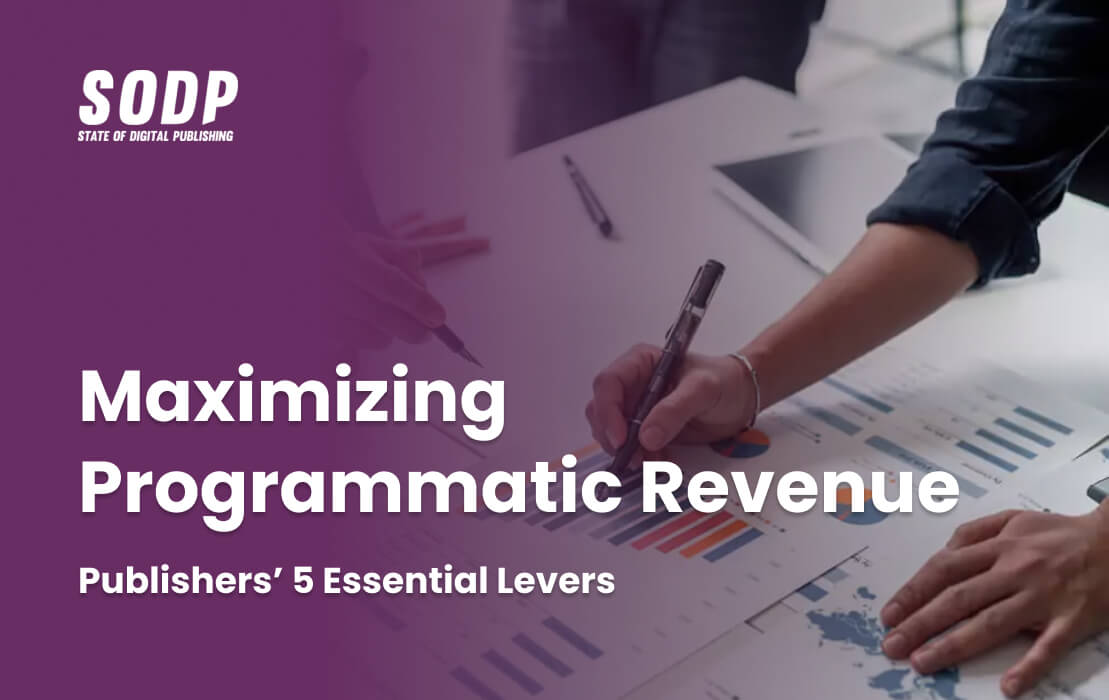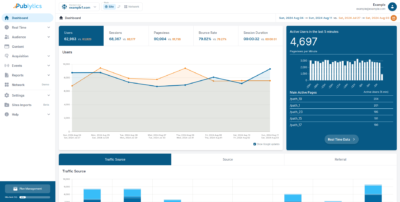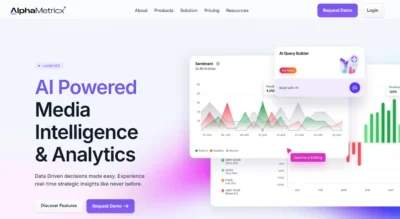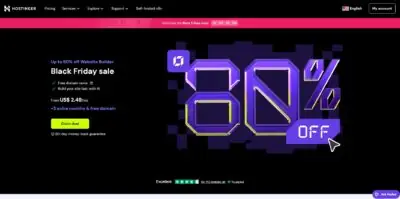Clients often call me looking for quick wins and asking what levers we can pull to increase revenue from our programmatic ads. Everyone loves quick wins and short-term gains, but it’s arguably more important to play the long game and ensure a comprehensive programmatic ad strategy is in place.
Programmatic advertising is a shifting landscape, and publishers unable to adapt will be left behind very quickly while others will continue to ride the wave of rising ad spend.
In the US, programmatic advertising digital display ad spend will make up 90% of digital display ad spend this year. This represents a massive shift when, not so long ago, programmatic was viewed as a backfill revenue solution to direct sales.
The uptick in programmatic spending will benefit publishers who are ahead of the curve, well-prepared and able to attract higher cost per mille (CPM) rates. The reality is that spending increases will primarily affect the upper range of CPM bids as advertisers compete more for premium publishers’ inventory. These publishers consistently deliver greater value for their advertising campaigns and, in turn, encourage repeat spending.
While it might be tempting to dive straight into optimizing your programmatic strategy to pursue higher returns, focusing on your ad stack first is more important.
Publishers need to ask their ad ops team when their most recent ad stack audit was. If the answer is “More than 30 days ago”, then alarm bells should be sounding.
The Need for Regular Ad-Stack Audits
Every publisher should regularly step back and run a full audit of their programmatic ad stack. Things break and, when gone unnoticed, can result in a loss of revenue.
This is a particular problem with programmatic, where everything is automated and missed issues can create a compounding effect. A perfect example is a slow-loading ad unit or rogue pricing rule that impacts bids from SSPs participating in the publisher’s auctions.
When an ad code takes too long to load and request an ad from an auction, it can be delivered after the user has already scrolled past the designated ad slot. This means the ad loads outside the user’s immediate view, resulting in a lower viewability rate. This can hurt your ability to command higher CPMs.
Buyers typically have a minimum key performance indicator (KPI) for viewability, often set at or above 70%. Ensuring that ads load swiftly significantly increases viewability. Ads delivered promptly enhance viewability and extend the time they spend in the user’s viewport. This, in turn, attracts higher bids and leads to increased CPM rates.
The longer a rogue pricing rule or a rule overlap goes unnoticed, the more significant the revenue loss can be.
At the same time, improper best practices can cause significant losses, especially at a time of shifting privacy regulations and user consent protocols. Fortunately, broken things can be fixed and methods can be updated and adjusted, underscoring the significance of conducting routine audits and health assessments across all ad ops.
While some publishers may seek quick wins, the real goal should be to find long-term strategies and have a programmatic roadmap. Like following any roadmap, you will encounter roadblocks and crossroads. However, having an open mind and quickly responding to changes will ensure your ad stack returns the maximum revenue.
Once your ad stack has been audited, your next step is to review and upgrade your ad strategy.
Five Key Programmatic Levers
Here are five key levers that publishers can pull to achieve a significant increase in programmatic revenue:
1. Performance Monitoring and A/B Testing
Revenue and performance monitoring: This should be understood first and is the most important. Monitor key performance indicators (KPIs) such as CPM, fill rate, click-through rate (CTR), and revenue per pageview (RPMs).
These KPIs should be reported daily across all ad units. An automated report or live dashboard that details all programmatic revenue and performance is critical in measuring the success of a programmatic stack, resulting in decisions made quickly and confidently.
Shortening the programmatic supply chain: Understanding your programmatic supply chain is crucial for several compelling reasons. A more streamlined supply chain ensures faster ad loading times and reduces the likelihood of flooding exchanges with multiple ad requests for the same ad impression. This situation can arise when bid requests originate from the same advertiser, depending on the number of resellers a publisher has authorized in their ads.txt file.
Therefore, the first step in comprehending and optimizing your programmatic supply chain should involve reviewing ads.txt. Shortening the chain results in fewer middlemen taking a percentage of your CPMs. Additionally, this adjustment addresses various other factors, such as enhancing transparency, gaining better control over your ad inventory, improving data privacy and, most importantly, enhancing the user ad experience by connecting your audience with advertisers more seamlessly.
A/B testing: Continuously test different ad configurations, placements, sizes and formats to identify what works best for your audience and generates higher revenue.
2. Ad Layout and Placement Optimization
Strategic ad placement: Experiment with ad placements likely to capture users’ attention without disrupting their browsing experience. This might involve placing ads within the content flow, at the end of articles or between sections.
Ad formats: Test new formats, such as native ads, in-feed ads, interstitials and display ads, to identify which resonate best with your audience.
Responsive ads: Ensure your ad units are optimized for various devices and screen sizes to improve user experience (UX) and ad visibility.
3. Audience Segmentation and Targeting
Data analysis: Use data analytics tools to understand your audience’s demographics, interests and behavior. This valuable first-party data can be instrumental in forming precise user segments for advertisers.
As the era of cookieless browsing approaches, marketers will seek alternative retargeting strategies for their campaigns. Incorporating enriched audience data into ad requests will draw higher CPMs in the open market and drive the growth of programmatic guaranteed (PG) and private marketplace (PMP) deals.
PG and PMP deals: Offer premium inventory and user audience data to advertisers through programmatic deals, ensuring a direct sale with fixed pricing to increase revenue.
4. Header Bidding and Waterfall Optimization
Header bidding implementation: Implement header bidding technology to allow multiple demand sources to bid on your inventory simultaneously, increasing competition and potentially driving up prices.
Waterfall optimization: While waterfall setups can be more straightforward than header bidding, they only sometimes return better yields. The choice between the two should be based on supply and the current setup’s yield.
If using a waterfall setup, regularly review and adjust the order of ad networks based on historical performance to maximize yield. Be very careful to ensure each supplier is filling at the corresponding pricing level.
5. Ad Quality and Viewability
Ad viewability: Ensure that ads are viewable to users using industry standards. In-view ads command higher CPMs and are more appealing to advertisers.
Ad verification: Use ad verification tools to prevent low-quality or fraudulent ads from affecting the UX and diminishing advertiser trust.
Adopting an Investment Mindset
Adopting a similar mindset as investing in stocks is essential when approaching programmatic advertising. By this, I mean investing in long-term and stable growth strategies rather than chasing exciting and volatile tactics that promise short-term victories and uncertainty in equal measures.
A healthy programmatic ad stack will yield reliable revenue that grows over time, allowing publishers to project their ad revenue and confidently build their business.
Each publisher’s data is unique to them. For example, a gaming app and a news website will have different users with different consumption patterns. This means you need to regularly assess your programmatic strategy and adjust it based on the data you gather to match your audience and brand.
If you don’t do this, how can you make informed decisions quickly to increase fill rates and CPMs?
The landscape for publishers needs to be more equitable. In comparison, some enjoy the best benefits with premium CPMs from open markets, while others struggle to secure even the most negligible gains and end up in a race to the bottom.
Publishers with a strong audience can quickly maximize ad revenue via programmatic without having an in-house team of experts. They don’t need to plaster their pages with ads to achieve success when, depending on the device and design, two to three conservatively placed ad unit placements per page will return a high RPM.
But what is a good programmatic RPM for a publisher?
For mid-size publishers with steady, quality audiences, a $10 RPM should be considered the absolute baseline for display advertising only. Anything lower than this should cause concern, hence the need for regular audits I mentioned earlier. With a well-structured programmatic ad stack, achieving an RPM ranging from $15 to $20 and above is feasible.
However, it’s essential to remember that RPMs can be subject to fluctuations caused by various factors, such as industry dynamics, market conditions, seasonality and changes in website content, products or audience. To maximize revenue as a publisher, it’s crucial to regularly monitor your RPM, adapt your programmatic strategy as needed and remain flexible to the evolving programmatic landscape.






